The seabed, an unmistakable universe
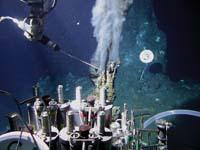
This vision did not change until the 1960s. It is at this time when ocean bottoms begin to be explored. Until then the technology was not as advanced as to go down to the bottom of the sea, but in 1964 the Americans embarked on Alvin. Just as Apollo designed to go to the Moon, they made a submarine that could accommodate three people inside to reach the bottom of the sea, and today Alvin continues to drag people into the depth of the sea.
Scientists are largely due to submarines like this.
Traces of plate tectonics
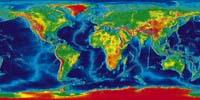
Among other things, shipments made in manned submarines have contributed to completing the theory of plate tectonics. In fact, in the global oceanic dorsal scientists have flooded numerous occasions and have closely observed the evidence of the appearance of the new surface.
According to the theory of plate tectonics, ocean expansion moves continental plates. And that movement occurs precisely in the dorsal. In the axis of the dorsal volcanic eruptions occur and large lava flows are emitted. They are generally basaltic fences that form a new surface. As new eruptions occur, the ground surface areas of new creation move away from the axis.
They move a few centimeters a year to the sides, so in the temporal scale of the human being the movement does not stand out. But in geology time is measured in millions of years, and in a million years the bottom is tens of kilometers away. Thus, tens of millions of years, they are hundreds or thousands of kilometers from the dorsal where the oceanic funds were formed.
As it moves away from the dorsal, the ocean surface is cooled and its density increases. When the density of this ocean surface is greater than that of the lower mantle, it sinks. The sinking zone is called a subduction zone. In the mantle, the earth's crust melts, so, as the geologists indicate, the crust is "recycled", which completes the process of forming the terrestrial surface.

Submarine volcanoes
However, there are still many questions to answer about volcanic activity on the seabed. For example, so far no one has objected at the time a rash is occurring. On the contrary, thirty-four years ago, they discovered the clear traces of ocean expansion. He participated in the Famous operation (French American Mid Ocean Undersea Survey), driven by American and French scientists, in 1973-74. Led by geologist Xavier Le Pichon, they explored the rift located about 700 kilometers south of the Azores, the deep valley that divides the ridge of the central dorsal of the Atlantic. Its aim was to discover the traces of ocean expansion.
In this operation, in addition to Alvin, they used the Archimede Baton and a French underwater crew, Cyana. From within, scientists saw for the first time a surprising world of basalt. The operation was really fruitful, as the submarines allowed them to walk on the bottom of the ocean and see with their eyes the newly created surface. In addition to seeing, images were taken and samples were taken and various physical-chemical parameters were measured at the site.
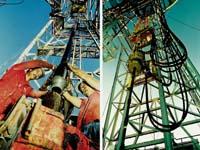
After Famous came more expeditions to explore the ocean floor. In these explorations, in addition to the submarine, the drilling boat was used. The drilling boat is very useful for geologists as it collects cylindrical columns of 6 cm of diameter and several meters of length. In this way, we can study the composition and structure of the oceanic crust, as well as the sediments that cover it.
Hydrothermal fireplaces
Famous's next known exploration was Cyamex in 1978. By then, geologists were fascinated by the structures generated by the eruptions that occur in the dorsal. The basaltic magma leaves at 1,200 °C and the sea water is at 2 °C. Therefore, its solidification is immediate and its appearance varies depending on the volume poured. If not much lava is poured, structures are created in the form of pillow (pillow lava). They are of various forms, often similar to tubes. On the contrary, when much lava is poured, the lava occupies all the grooves and flat structures like lakes are formed.
In the Franco-Mexican operation Cyamex, at the entrance of the Gulf of California, in Mexican waters, discovered other structures hitherto unknown as hydrothermal chimneys. One day a Mexican scientist descended inside Cyana and saw a special structure of vivid colors. On it were found remains of dead animals, as the shells that begin to undo. Other dives were then carried out in the area, finding remains of hot currents, fossils of worms, dead clams and more chimneys. But all were dead.
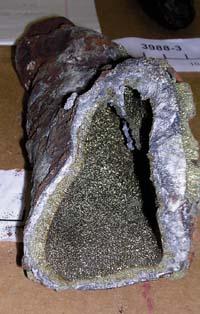
Suddenly... oasis
The following year, in 1979, with the aim of finding active hydrothermal fireplaces, French and American scientists returned to the same place in Operation Rise. They took the Angus to take photos of the background. The place was chosen with Sonarra and on the volcanic chain thousands of photographs of the background were taken. In them it was observed if there were remnants of life. According to this, the place where to dive was chosen, within Alvin.Thus they discovered the first active fireplaces. He was the emeritus professor at the University of Brest, geologist Thierry Juteau, who first discovered the ecosystem around them. In the dark, at a depth in which the ocean seems purple, thousands of animals gathered around spectacular fumaroles that poured black water: crabs, octopus, fish, worms, giants... In fact, fumaroles emit carbon dioxide, methane and, above all, hydrogen sulfide dissolved in hot water (the water leaves at 350 °C). Therefore, the environment is conducive to the growth of anaerobic bacteria with which numerous invertebrates and vertebrates coexist in symbiosis.
The fumaroles themselves are "metallic constructions". Dissolved in water are extracted metallic sulphies that when coming into contact with the cold water of the ocean precipitate immediately. This creates pyrite structures (FeS 2), calcopirite (CuFeS 2), soft (ZnS) and galena (Pb S) slightly, and calcium sulfate (CaSO 4) white. Other mineral salts (iron hydroxides, manganese and cobalt) float on the chimney to 200-3.000 meters and gradually accumulate on the basaltic rocks of the area forming a black bark.
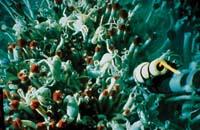
Since then, scientists have shown that fumaroles are part of the hydrothermal system of the seabed. The cold water of the ocean sinks by the cracks of the earth's crust. When lowering dissolves the minerals of the rocks. Under the Earth's surface, at the top of the magma chambers, high-temperature reactions occur. Then, the hydrothermal fluids are extracted from the chimneys in the form of black fumarole, whose flow can be more than one cubic meter per second. The entire system is essential for the composition of marine water to be stable.
The exploration of the seabed is not over, but it is clear that as technical advances allow us to better know the underwater universe. In addition, economic interests are also driving exploration of the ocean bottom: the depletion of surface mines has led to new sources. And the dorsal ocean is a large warehouse of metals.
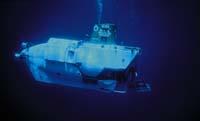
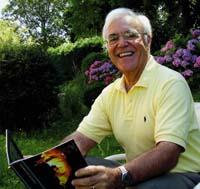
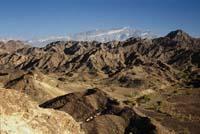
Buletina
Bidali zure helbide elektronikoa eta jaso asteroko buletina zure sarrera-ontzian











